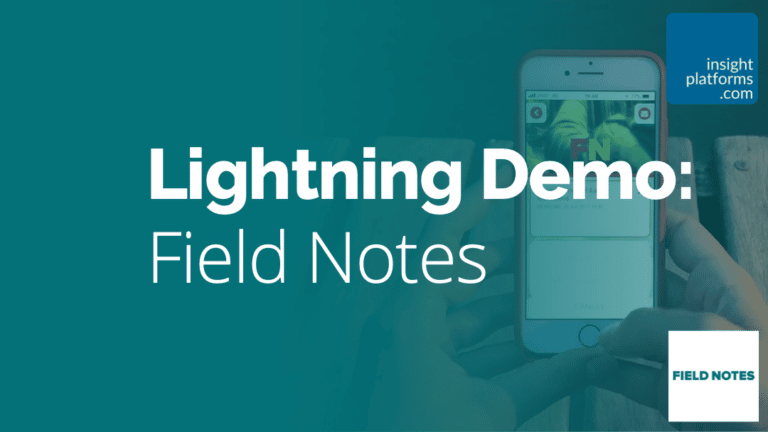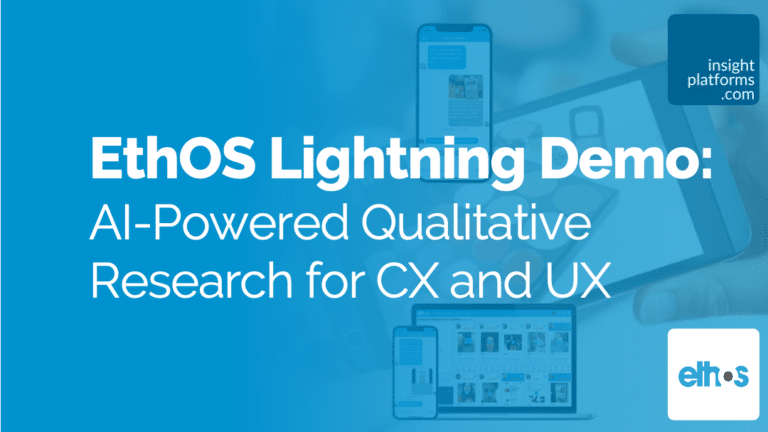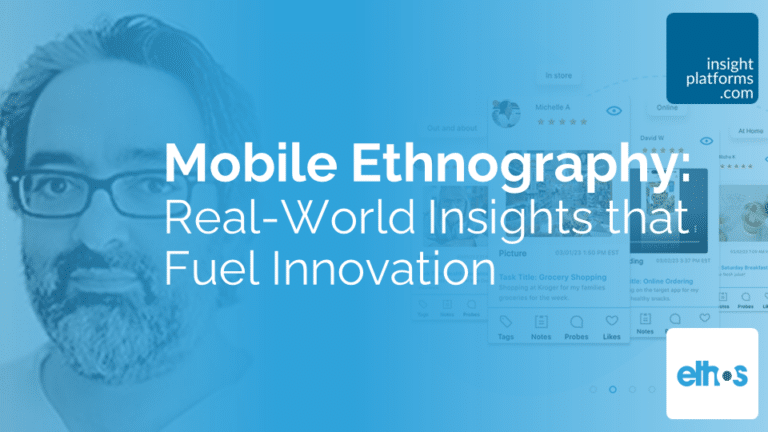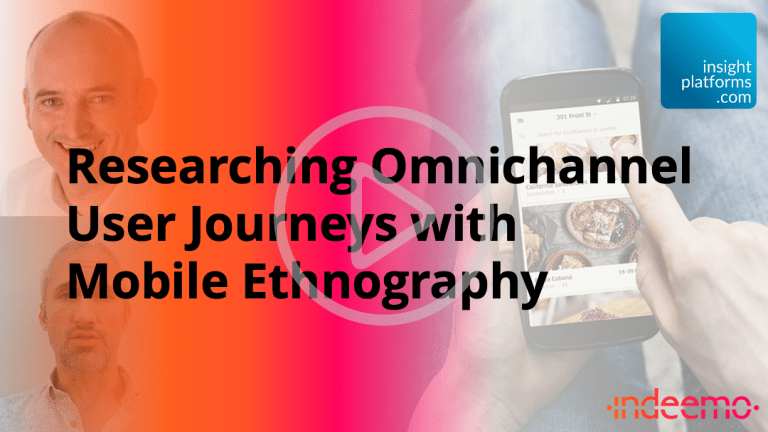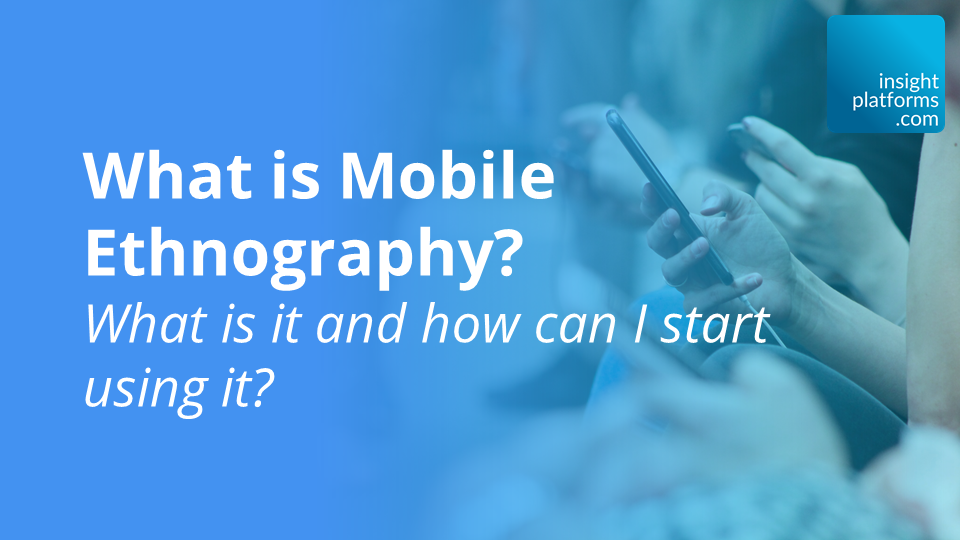
What is Mobile Ethnography?
By Insight Platforms
- article
- explainer
- Mobile Ethnography
- Qualitative Research
- Remote Qualitative Research
- Qualitative Pre-Tasking
- Video Diary Studies
- Diary Studies
- Video Research
- Path to Purchase Research
- Agile Qualitative Research
- Mobile Qualitative
- Online Qualitative
A question often asked of research is “” Ethnography, and more specifically here, mobile ethnography is designed to answer those fundamental questions.
Mobile ethnography is a valuable tool for studying people in their cultural settings. This is because it provides an in-context view of their behaviours, rituals, language and interactions.
Participants are asked to self-record their behaviours, experiences, thoughts and feelings about specific topics or task using their smartphone.
It is also know as smartphone ethnography, smartphone qualitative, or qualitative research at scale.
So, let’s start by taking a look at the benefits and risks to mobile ethnography.
We will then run through the use cases for mobile ethnography.
Finally, we’ll review the types of features you may need to run your own mobile ethnography.
And if you still want more after all that, we have a list of additional resources to find out more.
Benefits & Risks to Mobile Ethnography
The benefits of mobile ethnography vs. traditional ethnography are:
- Cost – Incentives for participation tend to be smaller than for those taking part in traditional ethnography. You can also significantly reduce moderator costs (time, travel, expenses, etc.) during the observations. Though don’t forget to factor in analysis time / costs.
- Scale – You can ask an unlimited number of participants to record their experiences and get a much broader view of behaviours. Equally, mobile ethnography allows participants from across the globe to take part – a significant benefit for emerging markets.
- Time – With mobile ethnography, results are often displayed in real time. This means the time from observation to boardroom is much shorter. You can also prompt the participants in real time using notifications (more on that later).
- Natural Behaviour – As participants are not being physically observed, they may be more likely to act more authentically. This, in turn, may lead to more valuable (and harder to find) insights.
The risks of mobile ethnography vs. traditional ethnography are:
- Self-completion – Mobile ethnography relies on participants recording themselves. Therefore, it may be that some insight nuggets get omitted, if the participant sees them as unimportant or boring. Or they may forget to take part altogether.
- Technology – Mobile ethnography is only as good as the available technology. In some markets, bandwidth or access to smartphones is a limitation. Make sure to do your homework to ensure that this method works within this context / audience / market.
That said, mobile ethnography has a number of use cases which should put it firmly in your insight tool box.
How do you use mobile ethnography?
There are any number of use cases. Here are some examples:
Unboxing, setup, and installation research

Some things just work, straight away, out of the box. Other things … not so much. Assembling toys, furniture, technology, can occasionally result in frustration, anguish and tears.
So understanding how people feel about these processes, and identifying the joy or pain points can be incredibly useful. Think manufacturers of items such as flat pack furniture that needs to be assembled. Or technology that needs to be set up and connected.
Mobile ethnography details the actions people take, and the thoughts and feelings they have about the process. It can chronicle the key first stages. Receiving the package, reading instructions, going through installation or assembly, and getting to actually use their new product.
As a result, mobile ethnography can help to improve these processes. Furthermore, it can also help create what has become an essential part of the marketing mix – the unboxing video. According to Google, the amount of time people have spent watching unboxing videos just on their phones is the equivalent of watching the holiday classic ‘Love Actually’ more than 20 million times. I’ll just leave that with you.
Customer journeys
Some product categories are high involvement, such as cars, holidays, and financial services. Consumers typically research their options, consider multiple product features and variables, and get opinions from friends, family and other influencers.
Expensive items are often high involvement. But so are items where there is a risk associated with making a poor choice. No one wants to get stuck with a two year contract with a phone they don’t like. Or have the wrong insurance policy for their needs.
Mobile ethnography is great for studying the extended customer journeys, the prolonged consideration and evaluation that characterises high involvement purchasing.
Smartphones are particularly effective at capturing omni-channel customer journeys. Consumers can use videos, images or voice recordings to document their journey in store, take pictures of websites browsed, or relevant TV, print or outdoor ads.
Understanding shopper experience
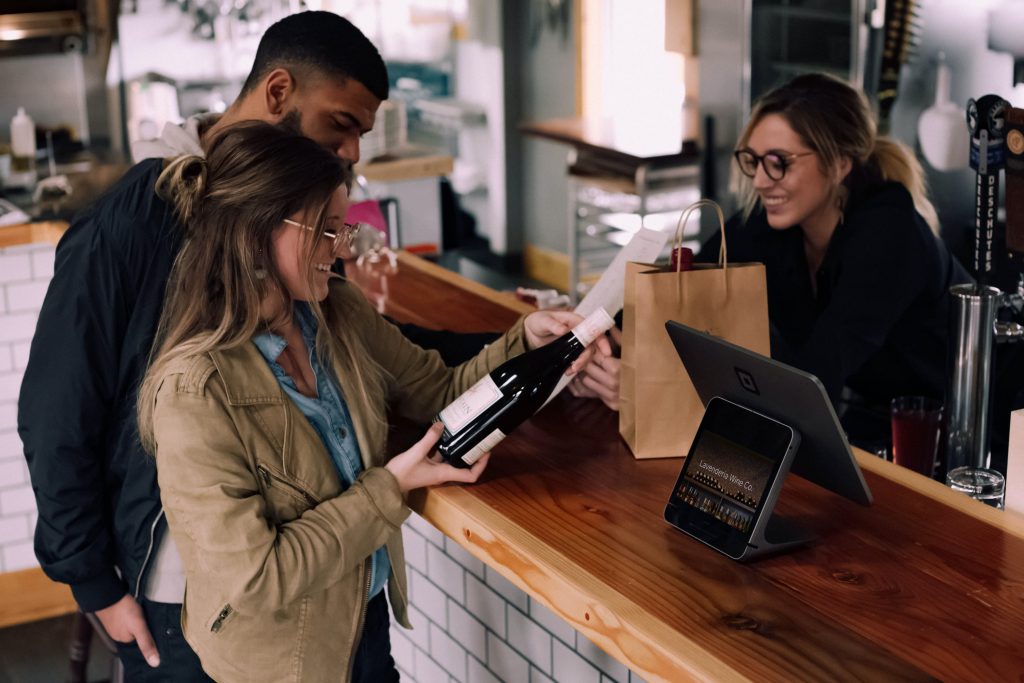
At the other end of the scale, is the low involvement or, even, impulse purchase.
When you’re doing the weekly shop, grabbing a lunchtime sandwich, or being tempted by a magazine at the till, you certainly aren’t weighing up your decision weeks in advance.
However, mobile shopper experience research can reveal a huge amount about what drove you to make that purchase. It shows, in the moment, how the context of the store – layout, the point of purchase display, the staff – contributed to your decision.
UX testing
How do people use websites and apps? There are so many variables. Which means there are so many opportunities to get it right, and be the next YouTube. Or get it wrong and sink without trace.
How easy is your website to navigate? Is it sticky? Where on your landing page should you put your call to action? What do people do first when they download your app? Are there features that are missing? And in-app purchase opportunities they aren’t spotting? And so on.
Mobile ethnography is a great way to track user experience and usability. Consumers navigate their way around your site allowing you to spot the pitfalls and the opportunities to improve, based on their experience.
Understanding consumer groups
Coffee drinkers, older mums, frequent users, millennials… Marketers may feel like they know these tribes. But the reality is, many have misconceptions or have made assumptions which could turn out incorrect. And that can be an expensive mistake to make. Understanding consumers is key to well targeted marketing, product development and customer service.
Mobile ethnography adds colour and depth to groups of consumers, however they are defined. It helps marketers to get a deep understanding of their target market, marketing personas, or market segments.
What are the key features and functions of mobile ethnography platforms?
All platforms are different. Some specialise in mobile ethnography. Others offer mobile ethnography as one part of a broader remit and set of features. However, here are some of the mobile ethnography features that are typically included:
Image capture
Consumers can snap pictures of their activities to bring them to life. Or, they can take pictures of adverts they have seen that they like or hate, or products they are considering. Images can also be used for projective exercises. Consumers can use them to express how they feel in particular situations, put together ‘mood boards’, or describe and compare products.
For example:

Video capture
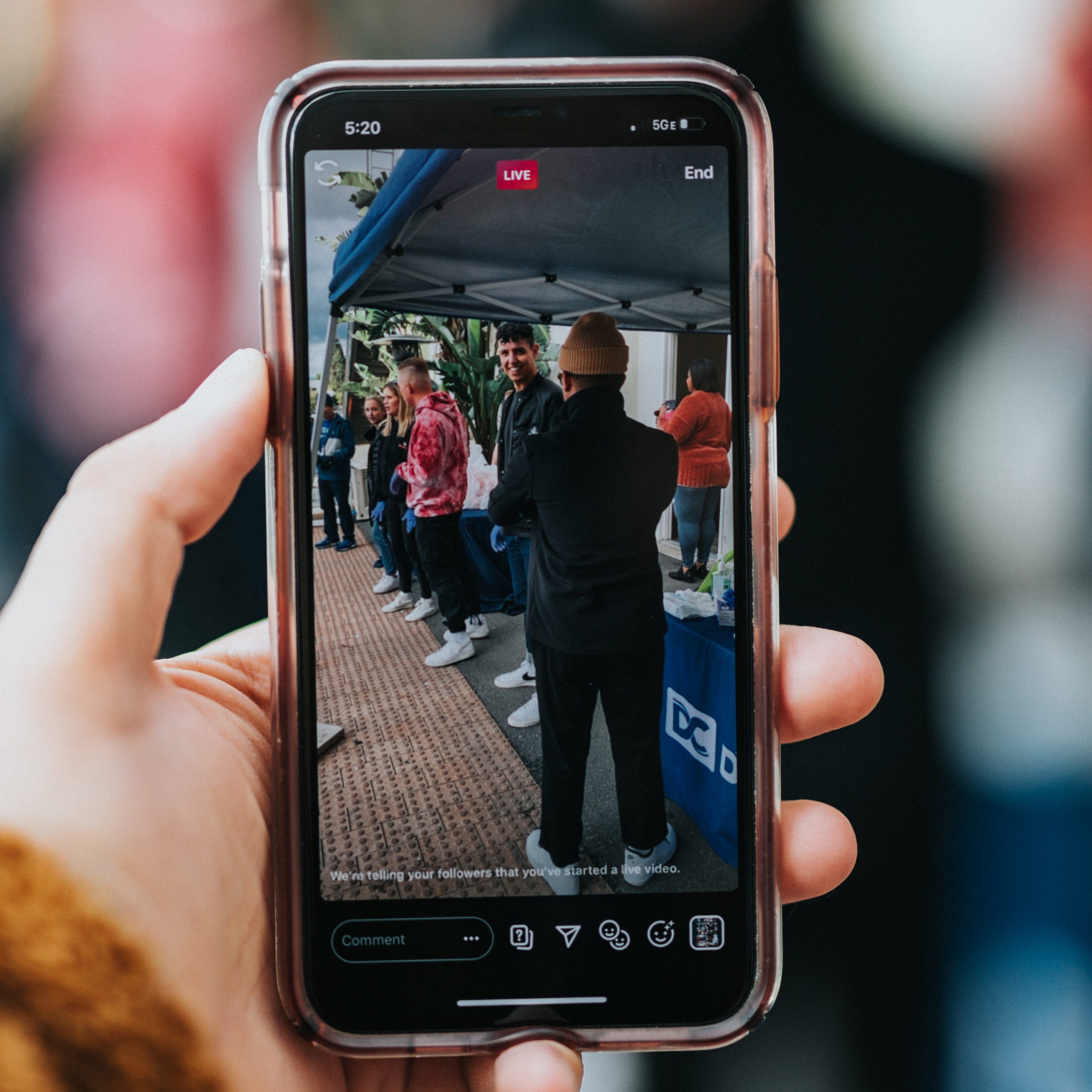
One of the most important ways that consumers can capture their lives is by using video.
They can film their activities, or record themselves reflecting on their experiences. Alternatively, they can invite researchers into their environment and show them their homes, workplaces, friends, or just cool and interesting things they have spotted.
Audio recording
Consumers can use audio to supplement image or text. They can also record their thoughts and feelings as they navigate a website, play a game, or make a purchase decision.
Participants can add a soundtrack to a mood board, or to an individual image. They can also interview other people in their lives to help explain situations or events.
Another use could even ambient sounds capture. The evocative call of seagulls at the beach, the lively buzz of chatter and clink of cutlery at the restaurant, the drunken singing at the bar…
All of this can help add to the rich picture you’re building of a consumers’ context and how that influences them.
Notes
Consumers can use text to enhance their captured images, audio, or video. They can make notes or to record their thoughts while they are doing the shopping, cooking, web-surfing or other tasks of interest.
Diaries
Capture a day in the life of a consumer, as they look after their baby. Or a week in the life of a consumer as they travel to work. Even a month in the life of a consumer as they choose and arrange a mortgage.
Diaries enable consumers to show you what they are doing, adding their own commentary and analysis of their activities.
This means that you are able to understand the issues that matter to the consumer in their own words. Moreso, it can help to observe behaviours that they may not be aware of or unable to articulate.
Diaries are also great for longer term longitudinal studies. For example, understanding the lifecycle of a car. A consumer could document getting to know their new car, right through to when they decide to trade it in or sell. Or a family with a new pet; a diary could help understand the choices they make, the products and services they buy, as it goes from puppy to adult dog, to older animal.
Mobile screen recording function
This captures everything a consumer does on their phone, from navigating around a website, playing a game, or using an app.
It also works for wider customer journeys. All the online research and browsing that a consumer does can be captured, as well as the actual online purchase.
Notifications
Researchers can actively moderate whilst the research is underway.
Mobile ethnography apps typically enable you to ask questions, assign tasks or get clarification on consumers’ behaviour and choices, in real time.
Analysis
Most platforms offer some form of dashboard to access and organise your results. They also offer analysis tools to help you sort and classify your results. You’ll often be able to tag with keywords, code results into groups, and search and filter by demographics, tags or other key variables.
Transcription
Some platforms offer transcription of the audio or video parts of your data and will link the transcribed output to the original file so you can easily find the sections of interest.
Sample
Some mobile ethnography providers are linked with online qualitative communities, or sample sources. This gives you access to the consumers with whom to conduct the research, as well as the features and functionality with which to capture the data.
Picture credits:
- Unboxing: Photo by cottonbro from Pexels
- Understanding shopper experience: Photo by Christiann Koepke on Unsplash
- Video capture: Photo by Nathan Dumlao on Unsplash


